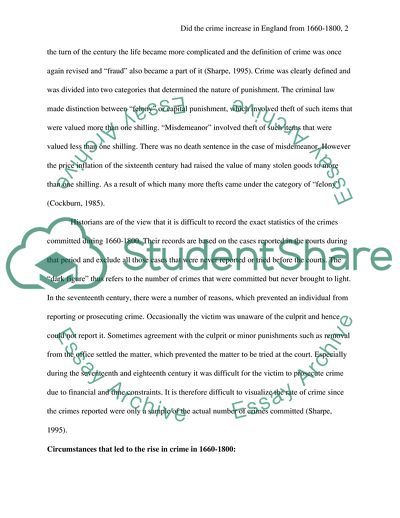Cite this document
(Crime in England during 1660-1800 Essay Example | Topics and Well Written Essays - 3000 words, n.d.)
Crime in England during 1660-1800 Essay Example | Topics and Well Written Essays - 3000 words. https://studentshare.org/law/1705468-did-crime-increase-in-the-period-1660-1800-provide-evidence-to-justify-your-answer
Crime in England during 1660-1800 Essay Example | Topics and Well Written Essays - 3000 words. https://studentshare.org/law/1705468-did-crime-increase-in-the-period-1660-1800-provide-evidence-to-justify-your-answer
(Crime in England During 1660-1800 Essay Example | Topics and Well Written Essays - 3000 Words)
Crime in England During 1660-1800 Essay Example | Topics and Well Written Essays - 3000 Words. https://studentshare.org/law/1705468-did-crime-increase-in-the-period-1660-1800-provide-evidence-to-justify-your-answer.
Crime in England During 1660-1800 Essay Example | Topics and Well Written Essays - 3000 Words. https://studentshare.org/law/1705468-did-crime-increase-in-the-period-1660-1800-provide-evidence-to-justify-your-answer.
“Crime in England During 1660-1800 Essay Example | Topics and Well Written Essays - 3000 Words”. https://studentshare.org/law/1705468-did-crime-increase-in-the-period-1660-1800-provide-evidence-to-justify-your-answer.


